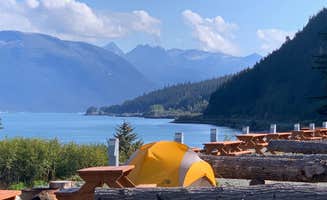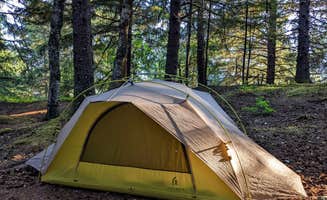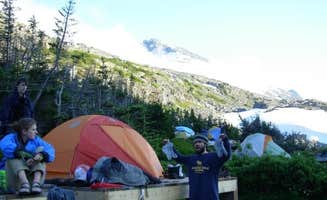Best Campgrounds near Haines, AK
The southeastern Alaska coastal town of Haines sits at the northern end of the Inside Passage, offering campers diverse options between mountains and sea. State-managed sites like Chilkoot Lake State Recreation Site and Chilkat State Park provide established campgrounds with basic amenities within 20 minutes of downtown. Portage Cove Campground offers walk-in tent camping near the ferry terminal with beach access and mountain views. The Chilkat Bald Eagle Preserve combines camping opportunities with wildlife viewing in a protected natural setting. Most campgrounds accommodate tents, while some also welcome RVs with varying levels of hookups and amenities.
Camping in the Haines area operates primarily from mid-May through mid-September, with most facilities closing for the harsh winter months. Weather conditions can change rapidly, requiring proper rain gear and warm clothing even in summer. As one camper noted, "Have warm clothing and quality rain gear, as inclement weather can set in quickly and last for days." Bear activity is common throughout the region, particularly near Chilkoot Lake where "lots of grizzlies" are frequently spotted. Cell service varies by location but is generally reliable at Chilkat State Park and in town. Transportation planning is essential, as some visitors arrive via the Alaska Marine Highway ferry system without vehicles, limiting access to more remote camping areas.
Wildlife viewing opportunities rank among the top experiences for campers in the Haines area. The Chilkat Bald Eagle Preserve attracts visitors for its concentration of eagles, particularly during salmon runs. Campers consistently praise the scenic beauty, with one noting that Chilkoot Lake offers "beautiful wooded campsites with fire rings, picnic tables, and flat areas for tents... and a short walk to the lake where a beautiful show occurs each time the sun sets." Shoulder seasons (early June and September) provide a quieter experience with fewer tourists and cruise ship visitors. Oceanside sites tend to be more exposed to weather but offer dramatic views of fjords and mountains, while forested sites provide better protection from rain and wind.





